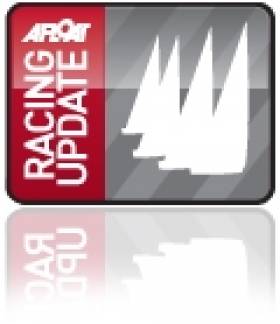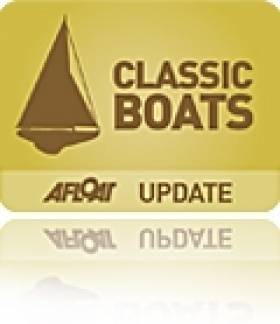Displaying items by tag: Glandore Harbour Yacht Club
#glandore – South coast yacht clubs are seeking to breathe new life in to Glandore Harbour Regatta this June Bank Holiday weekend. In a combined effort between Glandore Harbour Yacht Club, Kinsale Yacht Club and the Royal Cork Yacht Club a drive is being made to to revive Glandore Regatta.
Berthing will be provided on Glandore Harbour Yacht Club's summer moorings at Union Hall. The club is providing a ferry service to and from the moored boats. There will also be limited mooring at Union Hall Pier available.
Glandore Harbor Yacht Club are organizing a Barbeque on the pier at Glandore at 1700 hours attendee are invited to bring their own preferred drinks. Prize giving for the races into Glandore will take place at 19:00 hours on Glandore pier.
Glandore Harbor Yacht Club ere providing a ferry service to Union Hall after the prize giving for those wishing to socialise in the village.
Schedule of racing
Friday 29th May. Fastnet Race from Kinsale around Fastnet and finishing in Glandore (Sponsored by CH Marine).
Saturday 30th May. Crosshaven to Glandore. The race is open to all Cruisers/Sports Boats and White Sail fleets. This race commences: at the Revised First Gun of 0855 hours from Weavers point.
Note that there is also a race from Kinsale to Glandore on Saturday.
Sunday 31st May. Race from Glandore to Kinsale first gun 10:55. This race is open to all cruiser and white sail fleets. Marina berths will be offered to competing visiting boats in Kinsale on Sunday. Food will be served in the club house from 1700 hours with prize giving at 18:30. There will be a time limit cutoff of 1800hrs for this race.
Glandore Classic Regatta Attracts Inaugural Fastnet Winner, the Pilot Cutter Jolie Brise
#classicboats – Among the regatta highlights of this Summer's Glandore Harbour Yacht Club's Classic Regatta will be the attendance of the French built Pilot Cutter Jolie Brise, winner of the inaugural Fastnet race in 1925.
The CH Marine sponsored Glandore Classic Regatta is held every two years in Glandore Harbour and attracts owners and sailors of traditional and classic working boats and yachts from Ireland and abroad.
This year the Jolie Brise is celebrating her 100th birthday this year and will participate in the Glandore Classic Fastnet race on July 23rd.
The regatta will be officially launched next week in Cork city.
Glandore Harbour Yacht Club Gets New Clubhouse
#GLANDORE HARBOUR - After 27 years, Glandore Harbour Yacht Club has finally acquired a clubhouse in the picturesque West Cork harbour village.
"It may have taken a long time but the reward is that we have ended up with a perfect location for our clubhouse," says Commodore Diarmuid O’Donovan in a message on the club website.
The new facility has been funded by a combination of fundraising from past events and a mortgage of €140,000. More fundraising is required to may off the mortgage while the club begins work on the premises to bring them up to fire and disability certification.
"We are a small but thriving club and I am sure this will show as we continue to fundraise for the better of the club," says O'Donovan.
"We have come a long way over the past few years. Membership has grown significantly. We also need to update our sail training fleet and equipment to facilitate the expansion of the club. Junior sailing is the lifeline and future of our club.
"It is wonderful to see the enthusiasm of all involved and I am sure the clubhouse will be a welcome asset for all sailors alike."
Commodore O'Donovan also thanks the club's members and supporters, as well as past and present committee members, for the time and effort they have given to date.
Glandore Harbour Yacht Club
History
The first Glandore Classic Boat Regatta was held in 1992 under the flag of Glandore Harbour Yacht Club. It was held over a long week-end and the combination of the venue – Glandore harbour’s natural amphitheatre – the warm welcome and the growing interest in traditional boats, ensured its success. It attracted a fleet of local and overseas traditional and classic boats, notable among which were the Galway Hookers, Paddy Barry’s St. Patrick – since lost in Glandore – and Michael Brogan’s MacDuach. A number of features of the first regatta, including the Sunday Parade of Sail, have lasted to the present day.
The 1994 regatta built on the success of the first. It was opened by the
President Mary Robinson and saw the running of the first Glandore Summer
School, which included lectures, exhibitions and demonstrations on the
traditional boats of Ireland. The Sunday night fireworks display was introduced
in 1994 and has been a feature ever since.
The Classic Boat Regattas of 1996 and 1998 also included the Summer School during the preceding week with the boat events largely at the weekend. These years saw the start of the growth of a West Cork traditional boat revival, with Liam Hegarty’s Shamrock and other replica boats. The Ilen, another historic Baltimore-built boat, recently returned from the Falkland islands, was the star of the 1998 regatta.
2001 saw a change of name to Glandore Classic Regatta and the arrival of a major sponsor Venson plc. A sparkling fleet of classic yachts was attracted to the regatta, including our old friend, the Fife Solway Maid and Blue Leopard. In 2001 we also saw the arrival of fleets, the Water Wags doing formation sailing under the baton of Hal Sisk and the first of the Heir Island Sloops, who have become regulars at the Classic Regatta since then. The Elsa and Querida also turned up and had a thrilling personal derby. The Fastnet Race for the bigger boats was added to the programme in 2001.
The fleet motif was continued in 2003 when 15 boats of the Howth 17 Class came to Glandore for a week of sailing, cruising and carousing. The Heir Island Sloops arrived in strength for a week-long regatta and the traditional west Cork types, including the Heir Island Lobster Yawls, were also represented. A fleet of the aristocrats of the classic circuit the Wm. Fife designed yachts, included our old friend Solway Maid, Sincerity and Clio, and also the Cork Harbour One Designs, Jap, Maureen and Elsa. The Fastnet race where Sincerity and Clio battled it out to finish within minutes of one another, was a feature of the 2003 regatta.
The 2005 regatta fleets were augmented by the SOD's the Shannon One designs who enjoyed four days of glorious fleet racing and the inaugural Irish Classic dragon Championship.
The Classic Regatta has developed since 1992 into an outstanding event where the masterpieces of the great age of sail mingle with traditional West Cork workboats for a week of sailing and spectacle. The closing parade of sail and fireworks display have become a must-see on the sailing calendar. This year, 2009, promises to be a great event once again.
Glandore Harbour Yacht Club – mail/post to: Claire Thompson, The Old Craft Shop, Leap, Co. Cork. Tel: +353 28 34676; or club (for contact during the Regatta only please): +353 28 33640
Have we got your club details? Click here to get involved































































